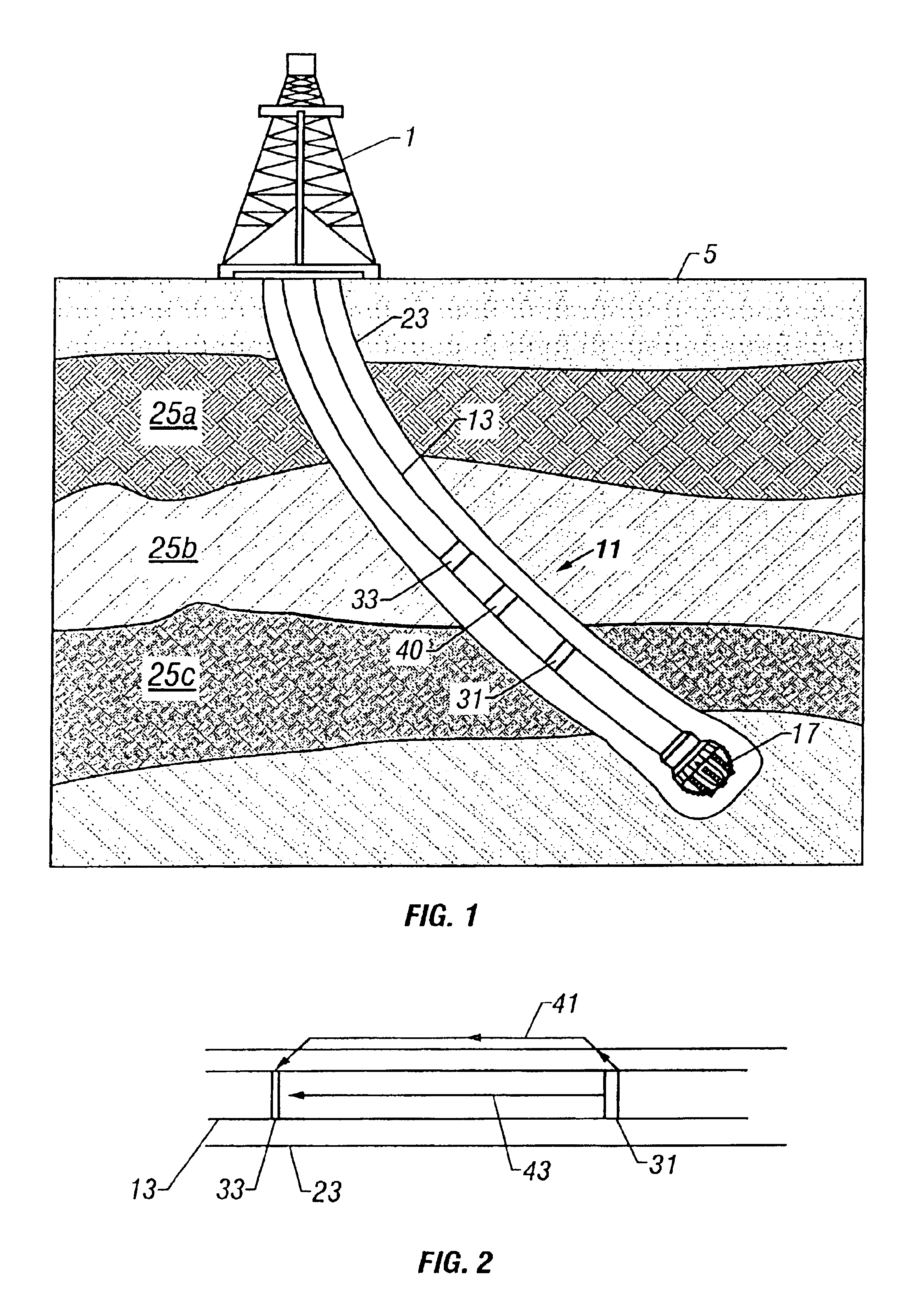Acoustic isolator for downhole applications
- Summary
- Abstract
- Description
- Claims
- Application Information
AI Technical Summary
Benefits of technology
Problems solved by technology
Method used
Image
Examples
Embodiment Construction
[0035]The present invention provides a system and method for attenuating acoustic waves in a down hole tool that is being used to obtain information about subsurface formations, some of which are believed to be holding hydrocarbon deposits. FIG. 1 is a schematic illustration of the use of a Measurement-While-Drilling (MWD) apparatus while drilling a well. At the surface of the earth 5 a drilling rig 1 is used to drill a borehole 23 through subterranean formations 25a, 25b, 25c etc. Those versed in the art would know that a drillship or a platform could be used to drill a borehole into subterranean formations covered by a body of water. A drilling tubular 13, that could be made of drill pipes or coiled tubing is used to rotate a drillbit 17 at the bottom, the rotating action of the drillbit and axial pressure carving out the borehole. When coiled tubing is used for the drilling tubular, a drilling motor (not shown) is used to impart the necessary rotary motion to the drillbit.
[0036]A...
PUM
 Login to View More
Login to View More Abstract
Description
Claims
Application Information
 Login to View More
Login to View More - R&D
- Intellectual Property
- Life Sciences
- Materials
- Tech Scout
- Unparalleled Data Quality
- Higher Quality Content
- 60% Fewer Hallucinations
Browse by: Latest US Patents, China's latest patents, Technical Efficacy Thesaurus, Application Domain, Technology Topic, Popular Technical Reports.
© 2025 PatSnap. All rights reserved.Legal|Privacy policy|Modern Slavery Act Transparency Statement|Sitemap|About US| Contact US: help@patsnap.com



